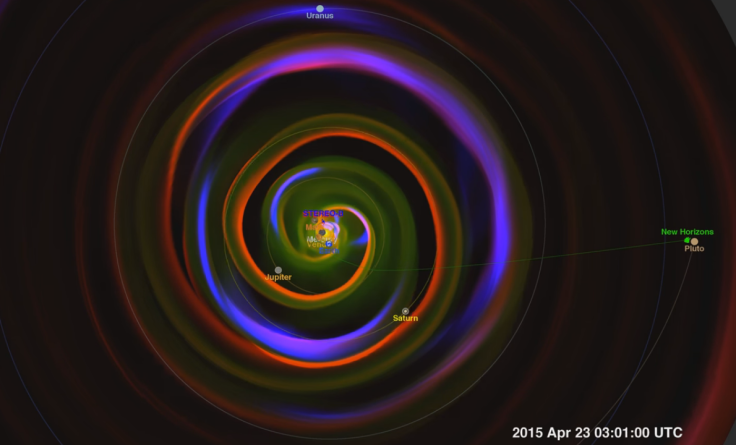Pluto's Space Environment Visualized In New NASA Simulation

During its decade-long voyage to Pluto, the New Horizons space probe had to not only wade through a constant stream of solar wind, but also occasionally brave much denser clouds of particles that constitute the coronal mass ejections (CMEs). Now, just days after releasing the highest quality photos of the dwarf planet’s pockmarked and mountainous surface, NASA has put together a visualization of what New Horizons encountered between January and July on its way to Pluto.
“We set the simulation to start in January of 2015, because the particles passing Pluto in July 2015 took some six months to make the journey from the sun,” Dusan Odstrcil, a space weather scientist at NASA's Goddard Space Flight Center Scientific Visualization Studio, who created the visualization, said in a statement.
The visualization shows undulating streams of solar winds -- composed of charged particles that flow constantly from the sun. They are seen forming a spiral shape coming off the sun as a result of the sun’s rotation. Solar winds can fluctuate from ambient to strong, and can affect instruments around Earth and on other planets if the timing and intensity are right.
The Enlil model -- named after the Sumerian god of wind -- also shows the faster, and much more erratic, CMEs. These particles produce aurorae when they hit Earth’s magnetosphere, and can also interfere with aviation technology, GPS systems and power grids.
However, as is evident from the visualization, since particles must travel for many months before reaching Pluto, the CMEs eventually spread out and merge with other CMEs and the solar wind to form larger clouds of particles and magnetic field. These combined clouds stretch out as they travel away from the sun, losing their characteristic balloon shape and morphing into thin, arching rings.
The Enlil model, in addition to giving us a psychedelic look at interstellar weather, also serves another crucial purpose. It helps scientists understand the environment through which a spacecraft travels, helping them better protect it -- and eventually its human inhabitants -- from radiation and other potentially damaging effects.
© Copyright IBTimes 2024. All rights reserved.





















